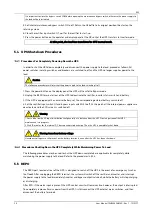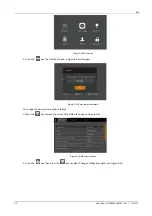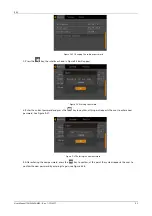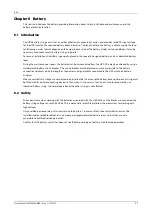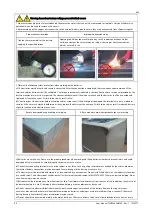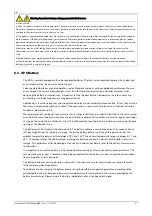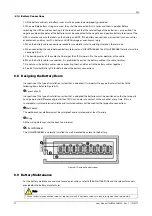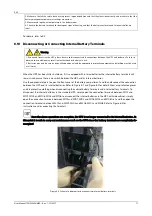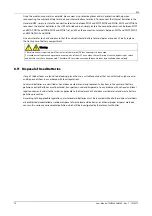
EXS
72
User Manual 10H52260UM60 - Rev. 1 - 10/2017
Once the maintenance work is complete, please wear arc protective gloves and arc protective clothing when
reconnecting the cabinet battery terminals and internal battery terminals. To reconnect the internal batteries in the
standard UPS, simply restore the connection terminals between W101 and W107, W102 and W106, W103 and W108; to
reconnect the internal batteries in the UPS with side cabinet, simply restore the connection terminals between W101
and W107, W102 and W106, W103 and W108 first, and then the connection terminals between W201 and W207, W202
and W206, W203 and W208.
Use a multimeter to check and ensure that the cabinet internal battery terminal poles are correct. Finally, replace
the front cover of battery compartment.
Warning
1. If maintenance is required, wait 10 minutes for the internal DC bus capacitors to discharge.
2. Hazardous voltages may be present on some parts of the UPS, even when the rectifier input switch, bypass input switch
and battery switch are disconnected. Therefore, UPS maintenance should be carried out by qualified personnel only.
6.11
Disposal of Used Batteries
If any of the batteries are found to be leaking, place them in a suitable container that can withstand sulphuric acid
and dispose of them in accordance with local regulations.
Lead-acid batteries are classified as hazardous waste material and represent a key item in the control of battery
pollution control. Batteries must be stored, transported, used and disposed of in accordance with national and local
legal requirements and all other criteria applicable to the treatment of hazardous waste material and waste battery
pollution prevention.
According to the applicable regulations, waste lead-aid batteries must be recycled, while all other disposal methods
are prohibited. Uncontrolled or random disposal of waste lead-acid batteries, or other improper disposal methods
can result in serious environmental pollution, which will be investigated by the relevant authorities.

